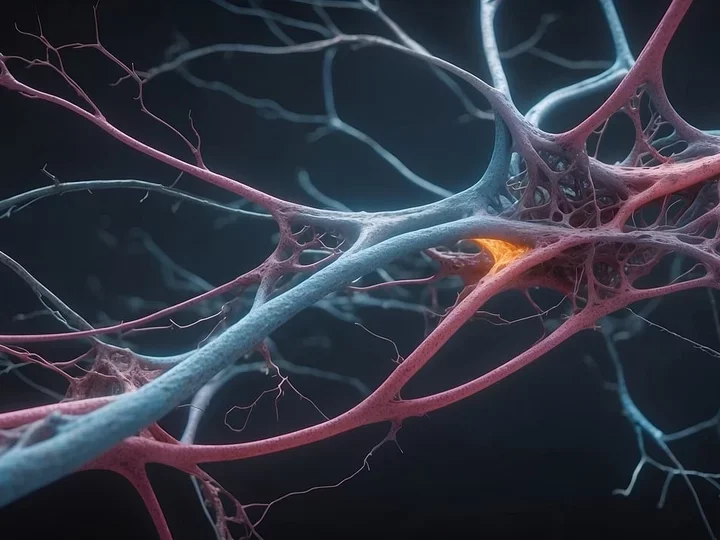Announcements
Recent News and Updates
March 24, 2023: multiWGCNA: an R package for deep mining gene co-expression networks in multi-trait expression data
Background: Gene co-expression networks represent modules of genes with shared biological function, and have been widely used to model biological pathways in gene expression data. Co-expression networks associated with a specific trait can be constructed and identified using weighted gene co-expression network analysis (WGCNA), which is especially useful for the study of transcriptional signatures in disease. WGCNA networks are typically constructed using both disease and wildtype samples, so molecular pathways associated with disease are identified. However, it would be advantageous to study such co-expression networks in their disease context across spatiotemporal conditions, but currently there is no comprehensive software implementation for this type of analysis.
Results: Here, we introduce a WGCNA-based procedure, multiWGCNA, that is tailored to datasets with variable spatial or temporal traits. As well as constructing the combined network, multiWGCNA also generates a network for each condition separately, and subsequently maps these modules between and across designs, and performs relevant downstream analyses, including module-trait correlation and module preservation. When applied to astrocyte-specific RNA-sequencing (RNA-seq) data from various brain regions of mice with experimental autoimmune encephalitis, multiWGCNA resolved the de novo formation of the neurotoxic astrocyte transcriptional program exclusively in the disease setting. Using time-course RNA-seq from mice with tau pathology (rTg4510), we demonstrate how multiWGCNA can also be used to study the temporal evolution of pathological modules over the course of disease progression.
Conclusion: The multiWGCNA R package can be applied to expression data with two dimensions, which is especially useful for the study of disease-associated modules across time or space. The source code and functions are freely available at GitHub.

April 21, 2023: Alterations in oligodendrocyte transcriptional networks reveal region-specific vulnerabilities to neurological disease
Neurological disease is characterized by the dysfunction of specific neuroanatomical regions. To determine whether region-specific vulnerabilities have a transcriptional basis at cell-type-specific resolution, we analyzed gene expression in mouse oligodendrocytes across various brain regions. Oligodendrocyte transcriptomes cluster in an anatomical arrangement along the rostrocaudal axis. Moreover, regional oligodendrocyte populations preferentially regulate genes implicated in diseases that target their region of origin. Systems-level analyses identify five region-specific co-expression networks representing distinct molecular pathways in oligodendrocytes. The cortical network exhibits alterations in mouse models of intellectual disability and epilepsy, the cerebellar network in ataxia, and the spinal network in multiple sclerosis. Bioinformatic analyses reveal potential molecular regulators of these networks, which were confirmed to modulate network expression in vitro in human oligodendroglioma cells, including reversal of the disease-associated transcriptional effects of a pathogenic Spinocerebellar ataxia type 1 allele. These findings identify targetable region-specific vulnerabilities to neurological disease mediated by oligodendrocytes.

May 20, 2020: Prevalence of RFC1-mediated spinocerebellar ataxia in a North American ataxia cohort
Objective: We evaluated the prevalence of pathogenic repeat expansions in replication factor C subunit 1 (RFC1) and disabled adaptor protein 1 (DAB1) in an undiagnosed ataxia cohort from North America.
Methods: A cohort of 596 predominantly adult-onset patients with undiagnosed familial or sporadic cerebellar ataxia was evaluated at a tertiary referral ataxia center and excluded for common genetic causes of cerebellar ataxia. Patients were then screened for the presence of pathogenic repeat expansions in RFC1 (AAGGG) and DAB1 (ATTTC) using fluorescent repeat-primed PCR (RP-PCR). Two additional undiagnosed ataxia cohorts from different centers, totaling 302 and 13 patients, respectively, were subsequently screened for RFC1, resulting in a combined 911 subjects tested.
Results: In the initial cohort, 41 samples were identified with 1 expanded allele in the RFC1 gene (6.9%), and 9 had 2 expanded alleles (1.5%). For the additional cohorts, we found 20 heterozygous samples (6.6%) and 17 biallelic samples (5.6%) in the larger cohort and 1 heterozygous sample (7.7%) and 3 biallelic samples (23%) in the second. In total, 29 patients were identified with biallelic repeat expansions in RFC1 (3.2%). Of these 29 patients, 8 (28%) had a clinical diagnosis of cerebellar ataxia, neuropathy, and vestibular areflexia syndrome (CANVAS), 14 had cerebellar ataxia with neuropathy (48%), 4 had pure cerebellar ataxia (14%), and 3 had spinocerebellar ataxia (10%). No patients were identified with expansions in the DAB1 gene (spinocerebellar ataxia type 37).
Conclusions: In a large undiagnosed ataxia cohort from North America, biallelic pathogenic repeat expansion in RFC1 was observed in 3.2%. Testing should be strongly considered in patients with ataxia, especially those with CANVAS or neuropathy.
